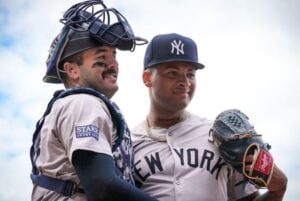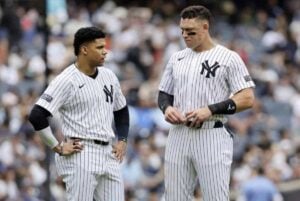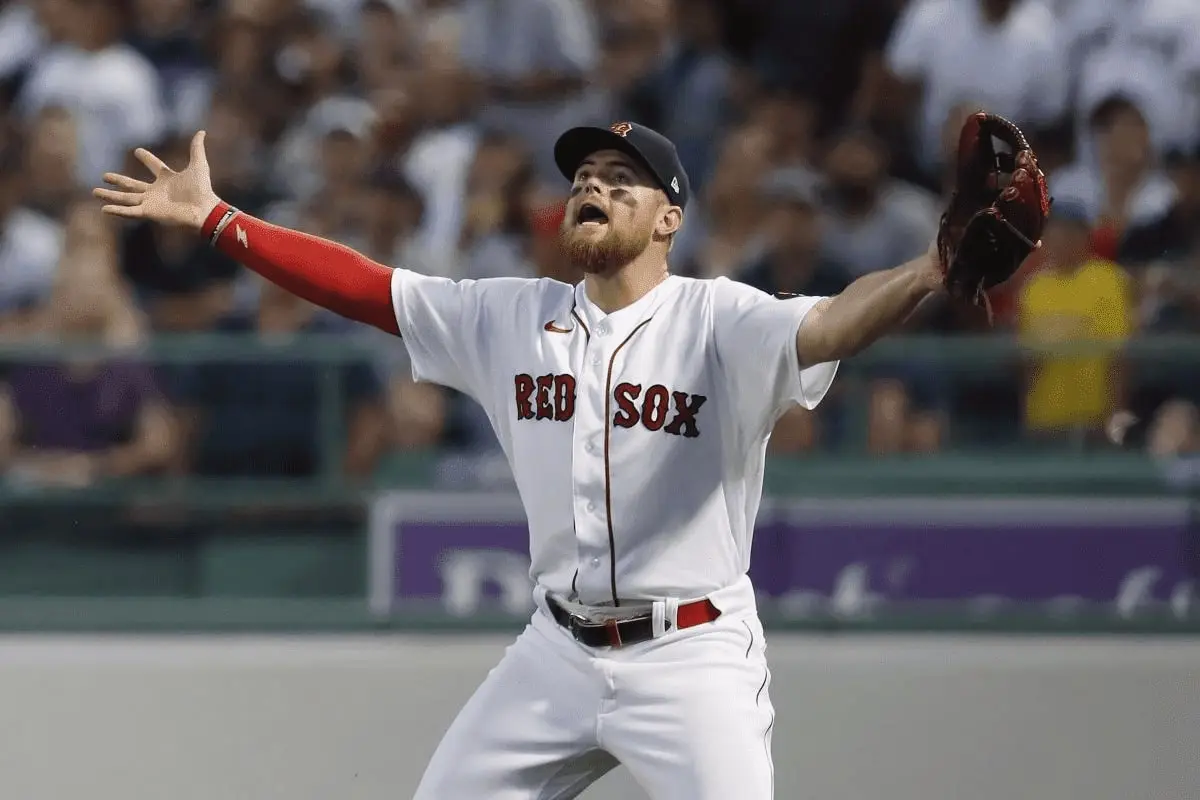Yankees’ closer crisis: Boone’s ‘creative’ cover-up of frantic search
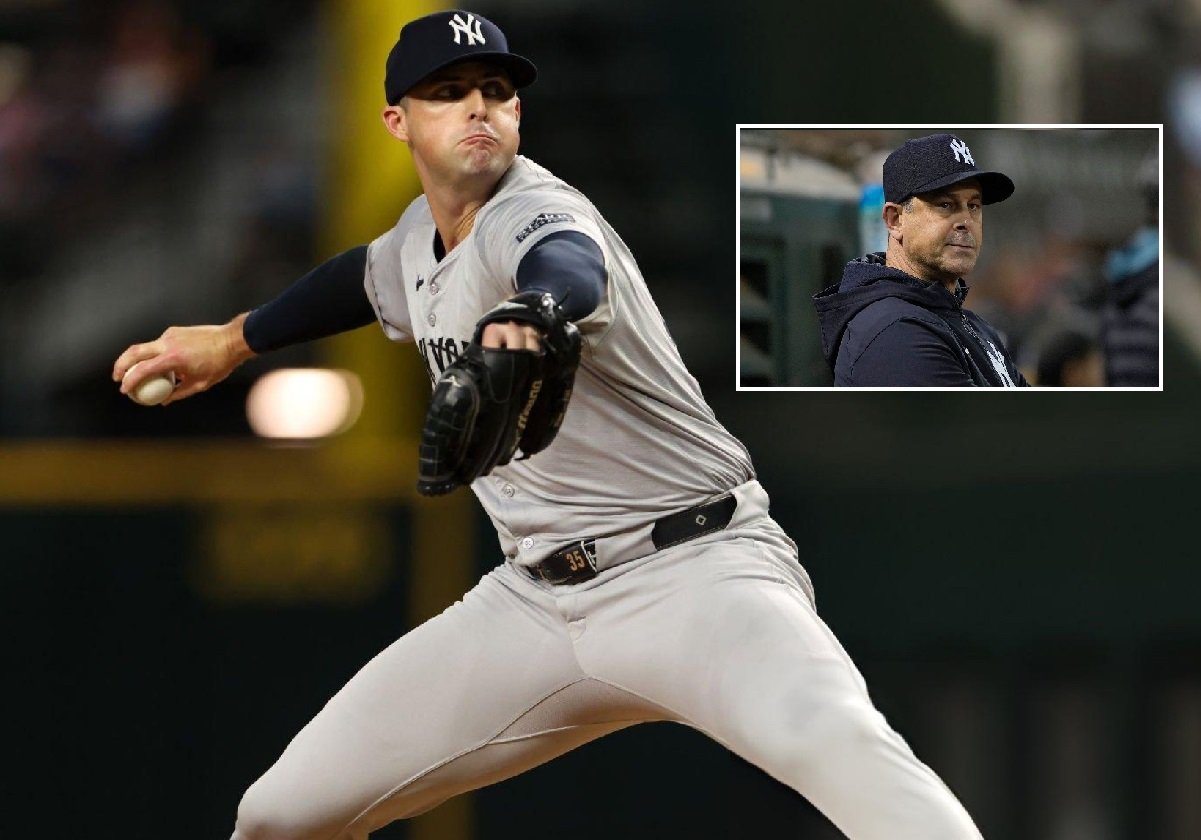
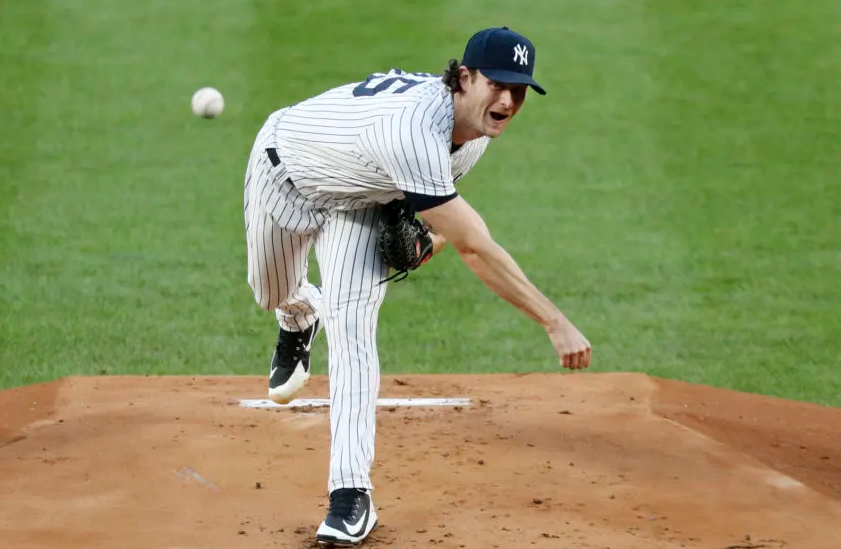
Michael Bennington
More Stories By Michael Bennington
- Mother’s Day: How Anthony Volpe’s mom molded him into a Yankee phenom
- How three-hour talks between Red Sox and Juan Soto put Yankees on alert
- MVP preview: Judge, Ohtani chosen for Fran Aaron Award
- Social Media Feasts on Rays Becoming Yankees’ $15M Tenant
- Yankees add 95-mph power hurler to bolster pitching depth
Table of Contents
Yankees manager Aaron Boone announced a shift in the team’s approach to the closer role following Clay Holmes’ recent struggles, including his costly walk-off grand slam allowed to the Texas Rangers on Tuesday night.
Boone outlined plans to “get a little creative with” strategy for closing games, moving away from relying solely on Holmes. The new Yankees approach will focus on situational matchups, deploying various relievers based on the opposing hitters rather than defaulting to Holmes in every save situation.
Yankees pitching coach Matt Blake explained the revised bullpen strategy, emphasizing the importance of finding the best matchups in high-leverage moments. He mentioned that relievers like Tommy Kahnle, Luke Weaver, and Tim Hill could see increased action, particularly against left-handed hitters. Blake noted the unique challenge posed by some Yankees relievers who have reverse splits, adding complexity to late-game decisions.
“It’s just making sure we’re putting the right matchups together at the end of a game,” Ythe coach explained. “I think that’s the biggest thing. If we’ve got some guys that get lefties out, then that’s probably a spot to bring those guys in, whether it’s Tommy (Kahnle), (Luke) Weaver and even (Tim) Hill, to a certain extent. We’ve got a lot of guys that are reverse split-oriented. But I just think Clay’s been really good for us, so I think he’s still gonna get a lot of high-leverage opportunities, and ultimately that’s a conversation we just have to continue to have.”
Despite the changes, Blake reiterated the Yankees’ confidence in Holmes, saying he would continue to be used in key situations. He emphasized the importance of ongoing discussions within the coaching staff to fine-tune their bullpen usage as the season progresses.
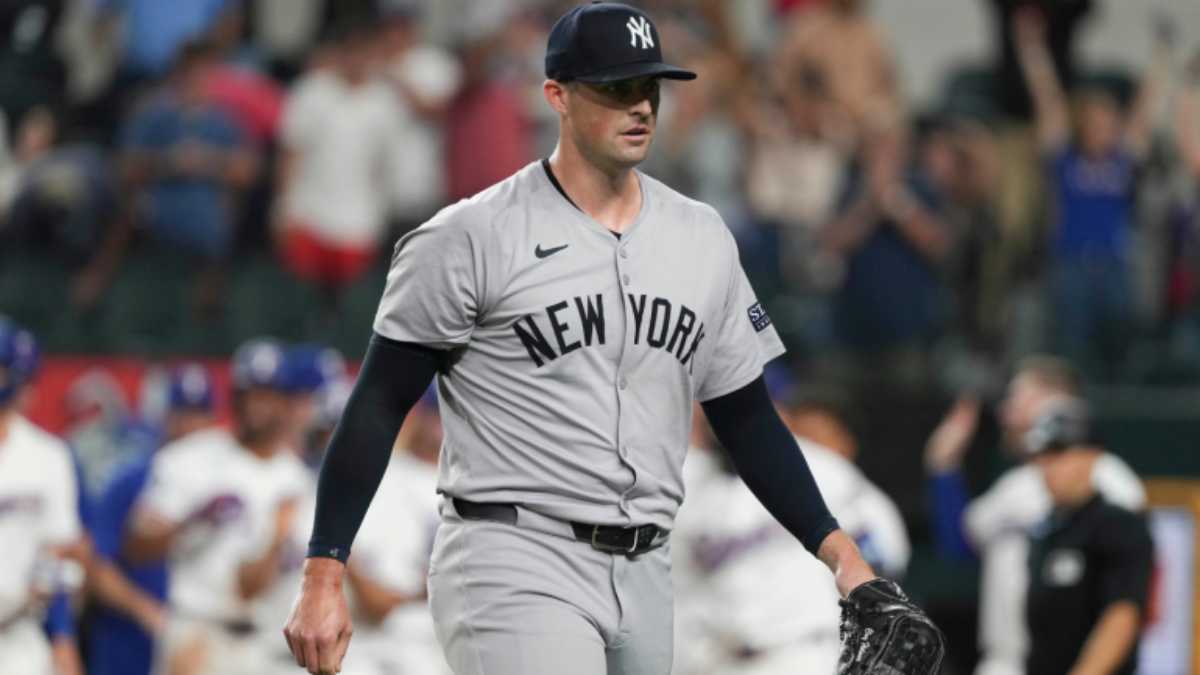
The Yankees viewed Tuesday’s rough outing as an outlier for Holmes this season. Both Holmes and the coaching staff recognized his delivery was off, a rare occurrence in an otherwise effective season where bad luck often overshadowed his performance. Notably, in four of Holmes’ 11 league-leading blown saves, he did not surrender any earned runs, underscoring the broader context of his struggles.
This adjustment reflects the Yankees’ commitment to refining their bullpen management as they aim to strengthen their push for the playoffs and gear up for potential postseason challenges.
Recent statistics challenge the narrative around Clay Holmes’ role as the Yankees’ closer. Despite criticism of his strikeout rate and reliance on contact, Holmes is averaging more than one strikeout per inning. His strikeouts per nine innings ratio even exceeds that of Cleveland Guardians closer Emmanuel Clase, a top candidate for the American League Cy Young Award. It’s notable that Clase, widely regarded as the best closer in baseball, led the league in blown saves last season.
The Yankees’ decision to pivot to a matchup-based closing strategy has raised questions about whether it’s a hasty reaction to Holmes’ recent struggles. Manager Aaron Boone and pitching coach Matt Blake have consistently voiced their confidence in Holmes. Blake recently told The Athletic that their coaching approach prioritizes process-oriented decisions over knee-jerk reactions to individual performances.
Addressing concerns that the strategy shift might be reactionary, Blake emphasized that it reflects an ongoing effort to make decisions rooted in data and team dynamics. He clarified that Holmes could still close games, but the new approach allows for flexibility in managing late-inning situations.
“I don’t know how reactionary it is,” he said. “You’re trying to follow the information as best as you can. Obviously, (Tuesday) was a tough one. You don’t want to react to that one specifically. So it’s obviously an ongoing conversation more than anything. I wouldn’t say Clay is not going to close games for us.”
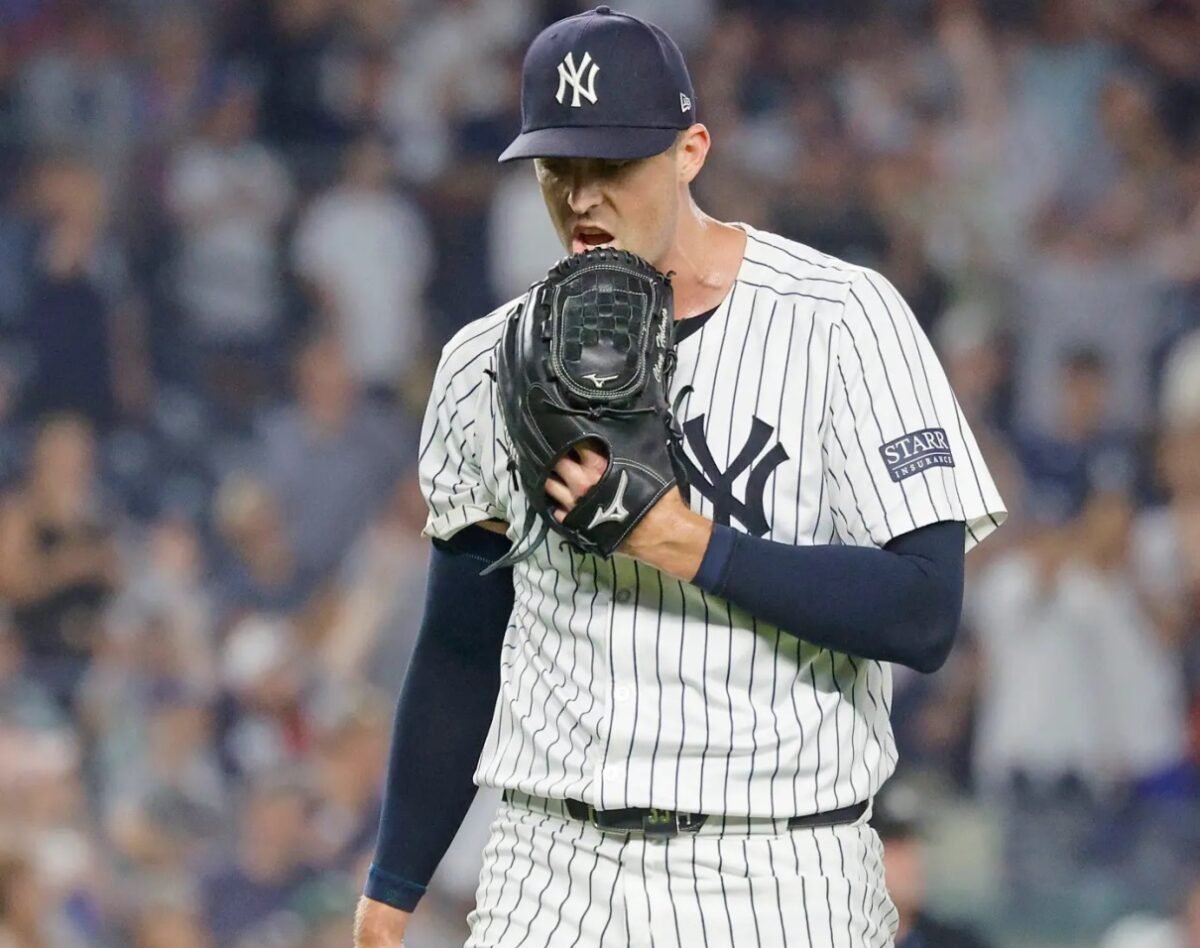
Both Boone and Blake acknowledged the external pressures and heightened scrutiny surrounding the Yankees’ closer role. They noted efforts to tune out public “noise,” suggesting that diversifying their bullpen options might also be seen as a response to growing calls for change.
Boone highlighted the intense spotlight on the Yankees, particularly in New York. He pointed out that many teams, even those with elite closers, face similar issues, and that it’s rare for any team to have a flawless closer throughout an entire season. Boone underscored that the Yankees’ primary goal remains optimizing their bullpen, with Holmes still expected to play a key role moving forward.
“We live under a bigger microscope here in New York with the Yankees,” the Yankees manager said. “The reality is there’s a ton of teams that have really good closers that go through some struggles, that have that same — everyone wants that perfect person on the back end. Usually, there’s one or two guys that have those kind of years. The bottom line is we have a lot of capable guys down there, Clay right at the forefront. It’s our job to try to get these guys to be at their best.”
The Yankees’ shift in closer strategy underscores the challenges of managing their bullpen this season, a situation worsened by the team’s failure to secure stronger relief options at the trade deadline. Recent acquisitions, including Mark Leiter Jr., have fallen short, and Enyel De Los Santos has already been removed from the roster. Preseason trades for Caleb Ferguson and Victor González also failed to deliver the expected results.
As a result, manager Aaron Boone now turns to a mix of relievers—Tommy Kahnle, Luke Weaver, Tim Hill, and Jake Cousins—none of whom have substantial closing experience. Yankees pitching coach Matt Blake acknowledged Holmes had been the default closer due to his experience and prior success. He noted the distinct pressures of the ninth inning but stressed that, ultimately, the job remains the same: securing three outs.
Holmes has taken the adjustment in stride, meeting with Boone before Wednesday’s game to discuss his new role and expressing a willingness to pitch whenever needed. Boone commended Holmes’ calm demeanor, an invaluable trait for anyone stepping into the demanding role of Yankees closer. He acknowledged that while Holmes’ approach is commendable, replicating the consistency of Mariano Rivera‘s storied career is nearly impossible.
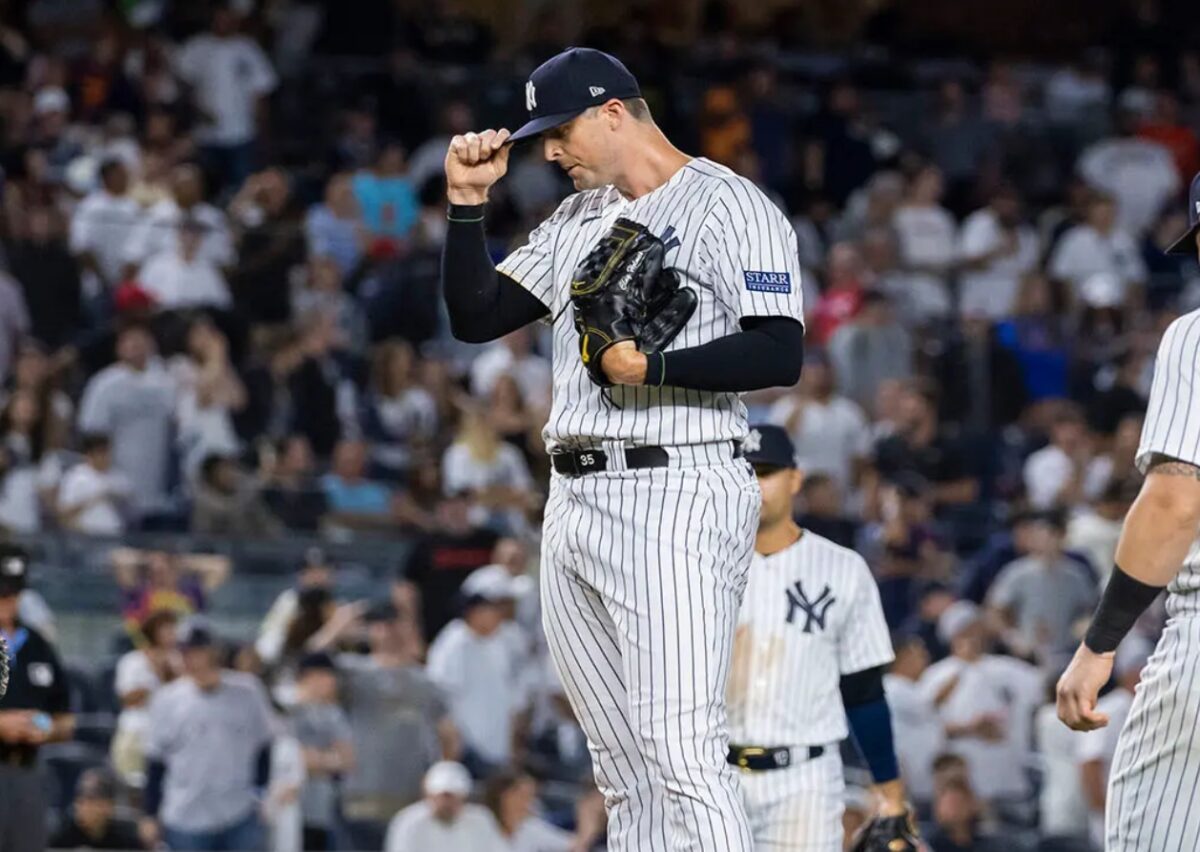
Reflecting on his season, Holmes described his outings as a mix of unlucky moments and more troubling performances like Tuesday’s. His balanced outlook shows a recognition of the complexities of closing games and the varied factors that affect a closer’s performance throughout the season. He emphasized his commitment to doing whatever it takes to help the Yankees, including adapting to any role the team needs.
Aaron Boone disclosed that the Yankees are considering shifting at least one of their current starters into a late-inning bullpen role. Luis Gil and Clarke Schmidt are slated to start in the upcoming series against the Chicago Cubs, with Nestor Cortes expected to pitch in relief after one of them, likely Schmidt due to his current pitch limitations.
Schmidt’s background as a reliever, paired with his strong command and strikeout potential, makes him a compelling bullpen candidate. The team ideally sees Schmidt regaining his pre-injury form to secure a spot in the middle of the rotation. Gil, while boasting some of the most electric stuff in baseball, has struggled with command, as reflected by his high walk rate and inconsistent control in several starts this season.
Boone remained noncommittal when asked specifically about Gil or Schmidt potentially moving to the bullpen, suggesting that multiple pitchers could be under consideration for the role. He emphasized that the next couple of weeks would be critical in making this determination, with a focus on optimizing the team’s performance.
The Yankees’ coaching staff plans to closely monitor the pitchers’ outings in the upcoming games to identify the best fit for a late-inning role. Boone highlighted the need for informed decision-making as the team looks to solidify its bullpen strategy and bolster its chances in the final stretch of the season.
Who will be the Yankees’ alternative closer?
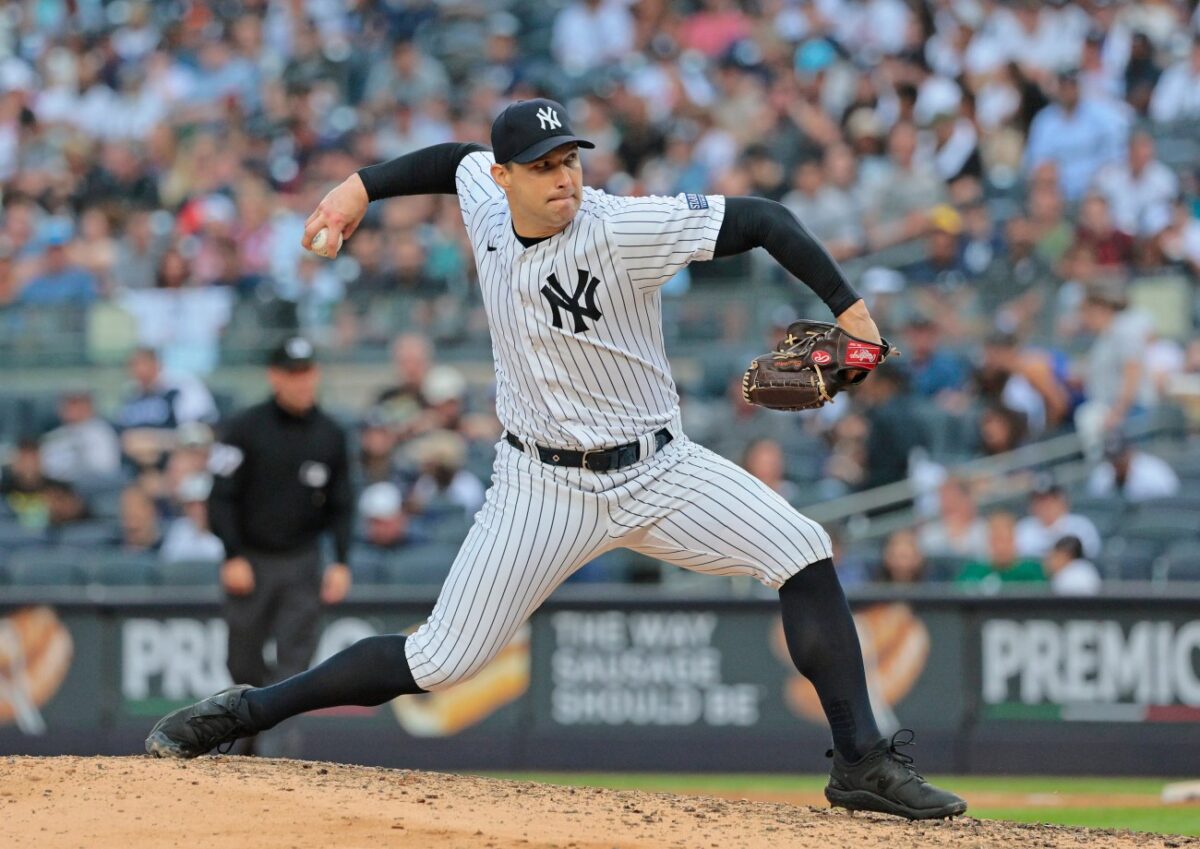
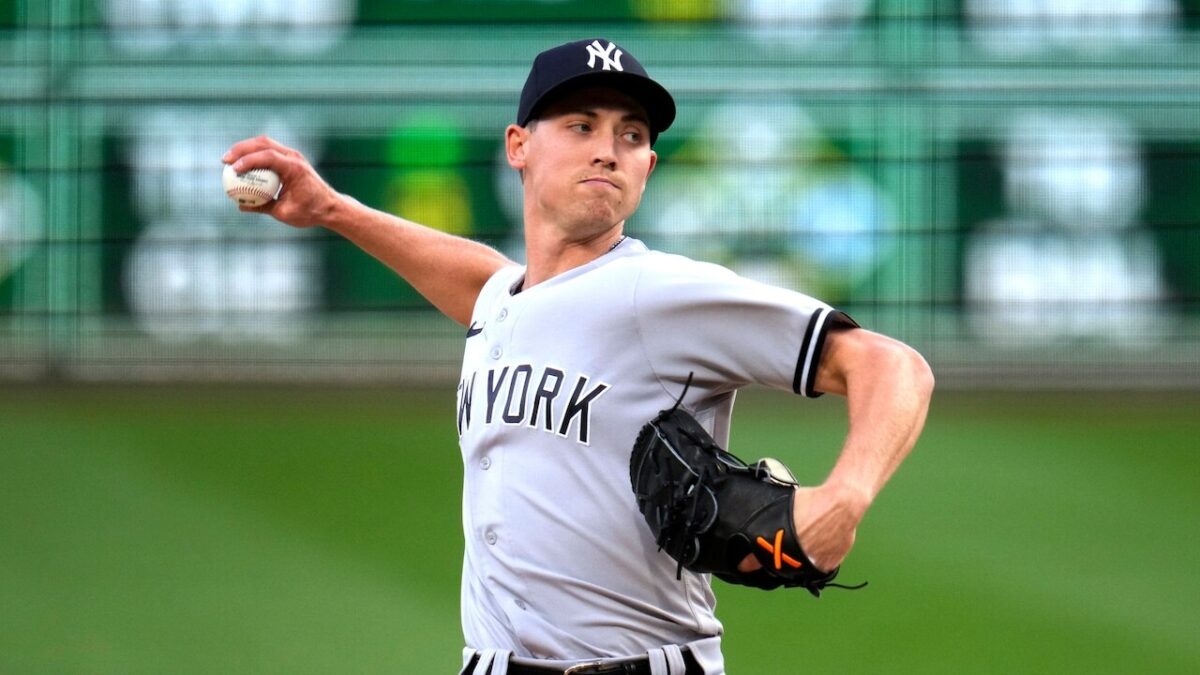
The Yankees are grappling with uncertainty in their closer role as the postseason nears, sparking discussions about whether Clay Holmes should be temporarily removed from closing duties. Despite the mounting pressure to explore other options, identifying a reliable replacement remains a challenge.
Three key candidates have emerged as possible alternatives: Tommy Kahnle, Luke Weaver, and Jake Cousins. Of the trio, Cousins is the only one to record a save this season, having closed out a game against the White Sox when Holmes was unavailable. Kahnle, however, brings the most experience with seven career saves accumulated over a decade in the majors.
Cousins is noted for having the most “closer-like” stuff, highlighted by a potent slider that frequently induces weak contact. His season stats before Wednesday were solid, featuring a 2.73 ERA, 45 strikeouts, and 14 walks in 33 innings. However, Cousins has struggled recently, allowing runs in his last three outings, including a tough eighth inning on Tuesday that was partly marred by defensive miscues.
Kahnle has also been effective, entering Wednesday with a 2.00 ERA, 38 strikeouts, and 16 walks over 36 innings. Despite diminished fastball velocity leading to opponents hitting .320 against it, Kahnle has adapted by leaning on his changeup to get outs. Yet, questions persist about whether a changeup-dominant approach can withstand the high-stakes pressure of the ninth inning. While some successful closers rely on a single pitch, it’s usually a high-octane fastball or biting slider, not a changeup, especially when not paired with a strong fastball.

This conundrum leaves the Yankees’ coaching staff facing a difficult decision as they evaluate the strengths and weaknesses of each reliever under the unique pressures of the closer role, hoping to find the right mix to stabilize their bullpen ahead of October.
Luke Weaver, who has made a successful shift from starting pitcher to high-leverage reliever, has posted a solid 3.33 ERA with 79 strikeouts and 23 walks across 73 innings this season. Despite his reliable performance, Weaver has yet to be utilized in a save situation, with most of his work coming in the seventh and eighth innings.
Luis Gil is another candidate for the closer role, though the Yankees currently prefer to keep him in the rotation. Gil is scheduled to return from the injured list to start against the Cubs on Friday. While moving Gil to the bullpen could ease rotation congestion and add a powerful arm to the relief corps, his long-standing role as a starter and recent injury recovery may limit his ability to pitch frequently or on consecutive days.
Ian Hamilton is also under consideration for late-inning duties. He could potentially rejoin the Yankees this weekend, pending the outcome of one final rehab outing scheduled for Wednesday or Thursday. Hamilton recorded two saves last season, including a notable three-inning save, but his performance this year was inconsistent before a lat strain sidelined him in June.
The Yankees face a challenging decision as they weigh these options to optimize their bullpen for the crucial final games of the regular season and potential postseason play. Each candidate offers unique strengths and considerations, complicating the choice of the most effective closer or late-inning reliever.
What do you think? Leave your comment below.
- Categories: Clay Holmes, Ian Hamilton, luis gil, luke weaver, tommy kahnle, Yankees bullpen
- Tags: Clay Holmes, Ian Hamilton, luis gil, luke weaver, tommy kahnle, Yankees bullpen


 Follow Us
Follow Us

